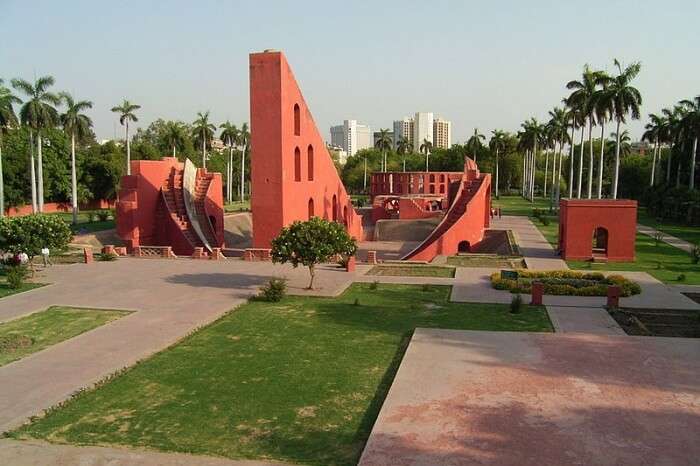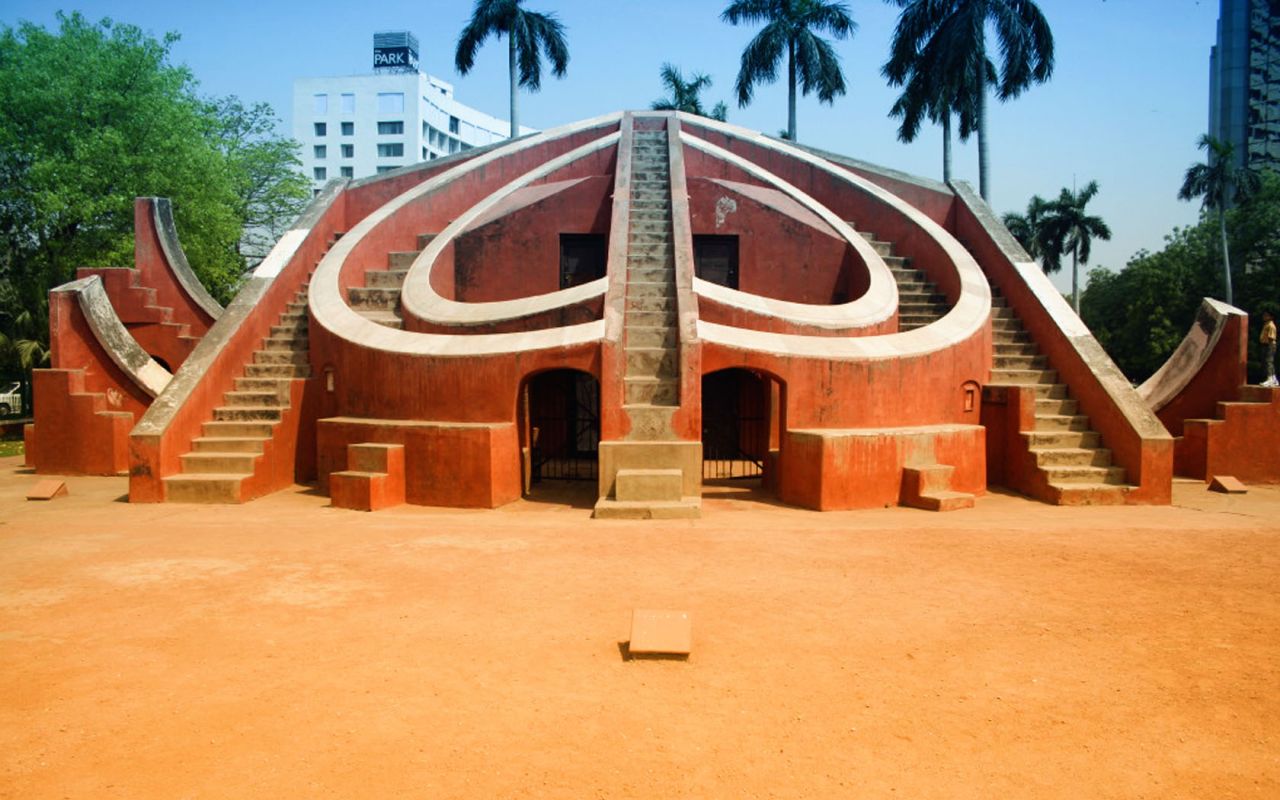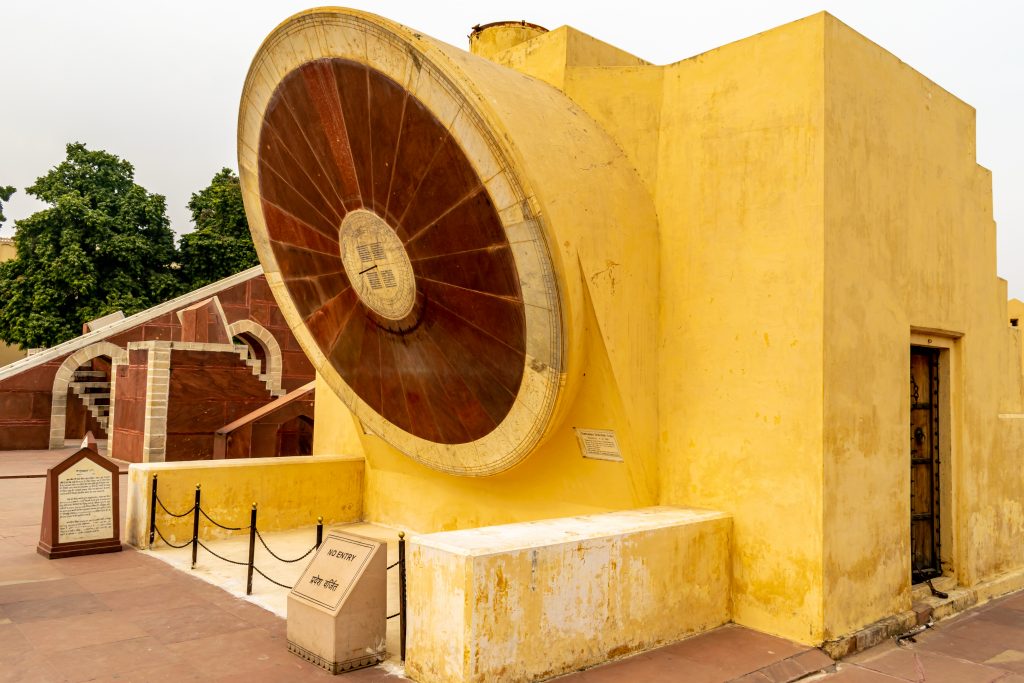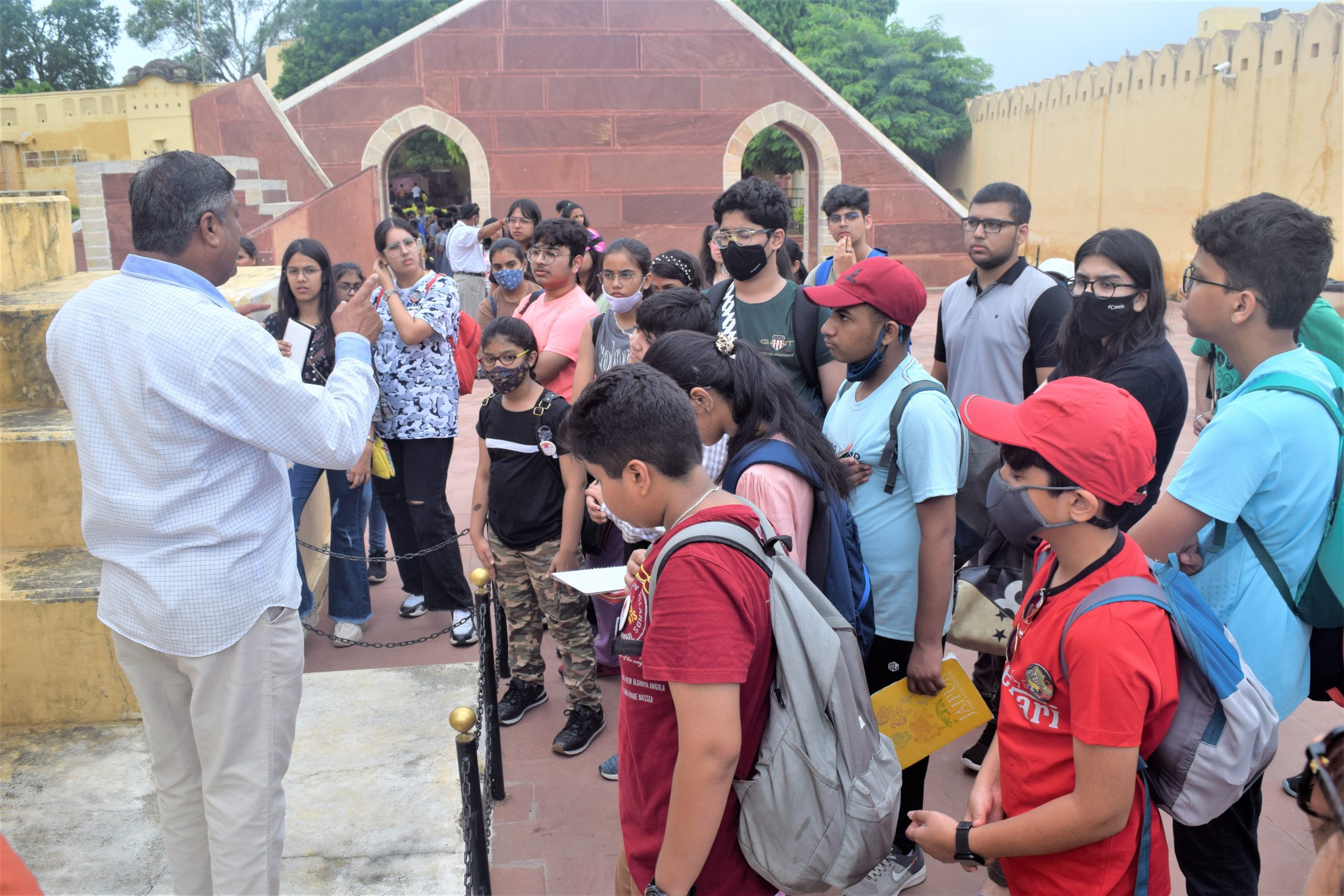Exploring Jantar Mantar in Delhi: A Timeless Wonder

Introduction to Jantar Mantar in Delhi
If you're a history enthusiast or simply looking for unique experiences, visiting Jantar Mantar in Delhi should be on your bucket list. This architectural marvel is a collection of astronomical instruments that has stood the test of time, making it a timeless wonder worth exploring.
Historical significance of Jantar Mantar
Built-in the 18th century by Maharaja Jai Singh II, Jantar Mantar was designed to be an observatory for studying celestial bodies and timekeeping. It was a testament to the scientific and mathematical prowess of the Indian astronomers of that era. The name "Jantar Mantar" roughly translates to "calculating device."
Unique astronomical instruments at Jantar Mantar
Jantar Mantar boasts a collection of 13 architectural astronomy instruments, each with its unique purpose. These instruments were meticulously designed to accurately record celestial bodies such as the sun, moon, and planets. Some notable instruments include the Samrat Yantra, the world's largest sundial, and the Misra Yantra, which measures the length of the day and night.
Importance of preserving Jantar Mantar
Preserving Jantar Mantar is crucial for several reasons. Firstly, it is a testament to India's rich scientific and astronomical heritage. Maintaining and showcasing this historical site can promote a deeper understanding and appreciation of ancient Indian scientific achievements.
Secondly, Jantar Mantar provides valuable insights into astronomical advancements during the 18th century. It offers a fascinating glimpse into the methods and tools used by astronomers of that time to study celestial bodies.
Lastly, Jantar Mantar is a popular tourist attraction and an architectural marvel that draws visitors worldwide. Its preservation ensures that future generations can continue to explore and learn from this unique piece of history.
So, if you find yourself in Delhi with an appetite for history and a fascination with astronomy, visit Jantar Mantar. It is a testament to India's scientific heritage and a captivating experience that will leave you in awe of the brilliance of our ancestors.

The Architectural Marvels of Jantar Mantar
Overview of the observatory's layout
If you're a history buff or love exploring unique sights in Delhi, visiting Jantar Mantar is a must. This awe-inspiring observatory, built in the 18th century by Maharaja Jai Singh II, is a UNESCO World Heritage Site. As you enter this architectural marvel, you'll be greeted by a vast expanse of beautifully crafted structures, each designed to measure celestial phenomena with remarkable accuracy.
Key attractions and their architectural features
One of the main attractions at Jantar Mantar is the Samrat Yantra, the world's largest sundial. This colossal structure, consisting of a triangular gnomon with a height of 27 meters, is designed to cast a shadow that can be used to determine the time with incredible precision. The geometric precision of this instrument is truly a testament to the scientific knowledge and architectural prowess of the time.
Another fascinating instrument at Jantar Mantar is the Jai Prakash Yantra, which consists of twelve smaller sundials at different angles. Along with measuring time, each sundial can also calculate the position of heavenly bodies and predict eclipses. These instruments' intricate design and careful alignment showcase the meticulous attention to detail that went into their construction.
Exploring the Sundial and other intriguing instruments
While the Samrat Yantra and Jai Prakash Yantra are the main highlights, Jantar Mantar is also home to several other intriguing instruments. The Misra Yantra is a composition of five different instruments that can be used to measure the shortest and longest days of the year and the declination of the sun and other celestial bodies.
The Ram Yantra, on the other hand, is a set of two cylindrical structures with holes arranged in intricate patterns. When aligned with a celestial object, these holes can be used to measure the altitude and azimuth angles. Combining these architectural wonders makes Jantar Mantar an absolute delight for anyone interested in astronomy and the scientific genius of the past.
As you wander through Jantar Mantar, take a moment to appreciate the brilliance and ingenuity of these ancient instruments. They not only serve as a reminder of India's rich scientific heritage but also provide a fascinating window into the astronomical knowledge and architectural skills of the time. Exploring Jantar Mantar is truly an experience that will leave you in awe of humanity's quest to understand the mysteries of the universe.

Unraveling the Scientific Significance
If you're visiting Delhi and looking for a unique experience, explore the marvellous Jantar Mantar. This architectural gem is a collection of astronomical instruments that have stood the test of time.
Understanding the purpose of Jantar Mantar's instruments
Built in the early 18th century by Maharaja Jai Singh II, Jantar Mantar was designed to accurately measure time, observe celestial events, and aid in astronomical calculations. The instruments, which are marvels of precision engineering, were used to track the movement of celestial bodies, calculate eclipses, and determine planetary positions.
Role of Jantar Mantar in astronomy and timekeeping
Jantar Mantar's instruments were crucial in advancing astronomical knowledge during that time. The main instrument, the Samrat Yantra, is a sundial with an accuracy of just two seconds. It measures the height and azimuth of the sun, allowing astronomers to calculate the local time accurately.
Another fascinating instrument is the Jai Prakash Yantra, which consists of two concave hemispheres. By observing the celestial bodies through the small holes in these hemispheres, astronomers could determine the celestial coordinates and calculate the distance, size, and movement of stars.
Contributions to ancient Indian science and knowledge
Jantar Mantar stands as a testament to India's rich scientific heritage. It showcases the advanced knowledge of ancient Indian astronomers and their expertise in mathematical calculations and engineering.
The accurate predictions made using the instruments at Jantar Mantar were ahead of their time and were used to create calendars and almanacs for various purposes. The scientific discoveries made here contributed significantly to the understanding of celestial phenomena and shaped the advancement of astronomy in the Indian subcontinent.
Visiting Jantar Mantar allows you to immerse yourself in the history of scientific achievements. As you marvel at these ancient instruments, you gain a deep appreciation for the intricate knowledge and skill that went into their creation.
So, the next time you find yourself in Delhi, explore Jantar Mantar. It is not just a historical site but a timeless wonder that showcases the remarkable scientific achievements of ancient India.

Exploring Jantar Mantar: What to Expect
You're in for a treat when you visit Jantar Mantar in Delhi. This historic observatory is a timeless wonder that will take you back to the days of ancient astronomy. Here's what you can expect during your visit.
Visitor information and entrance fees
Jantar Mantar is located in the heart of Delhi and is easily accessible. The entrance fee is affordable, with discounts for students and senior citizens. The observatory is open from sunrise to sunset, so you have plenty of time to explore and soak in the history.
Guided tours and audio guides
Consider joining a guided tour or using an audio guide to make the most of your visit. Knowledgeable guides will walk you through the complex, explaining the astronomical instruments and their significance. Alternatively, you can rent an audio guide that provides detailed information as you explore at your own pace.
Tips for a memorable visit and photography
To ensure a memorable visit to Jantar Mantar, keep these tips in mind:
-
Comfortable footwear and clothing: The complex is spread over a large area, so wear comfortable shoes and dress appropriately for the weather.
-
Timing: Visit early in the morning or during sunset for the best lighting and fewer crowds. This will also enhance your photography experience.
-
Photography: Photography enthusiasts will find plenty of fascinating subjects at Jantar Mantar. Capture the intricate instruments, the beautiful architecture, and the mesmerizing astronomical structures.
-
Respect the surroundings: Jantar Mantar is a UNESCO World Heritage Site, so treat it respectfully. Avoid touching the instruments and follow any rules or instructions the guides give.
Exploring Jantar Mantar is like taking a step back in time. The intricate instruments and magnificent structures will leave you in awe of the ancient astronomers' genius. So plan your visit, bring your camera, and get ready to discover the wonders of this timeless observatory in the heart of Delhi.

Jantar Mantar: An Iconic Tourist Destination
Jantar Mantar's allure for history enthusiasts
If you are a history enthusiast, visiting Jantar Mantar in Delhi is a must. This ancient astronomical observatory, built in the early 18th century by Maharaja Jai Singh II, offers a fascinating glimpse into India's scientific and cultural heritage.
The site features a collection of nineteen architectural instruments used to observe and measure celestial objects. These instruments, made of stone and marble, are a testament to the remarkable knowledge and skill of the astronomers of that time. As you walk through the complex, you will be amazed by these instruments' intricate designs and precision.
Inspiring architectural and scientific wonder
The architectural marvels of Jantar Mantar are visually striking and showcase the advanced scientific understanding of the astronomers who designed them. The instruments were used to measure time, track celestial movements, and make astronomical calculations with impressive accuracy. The most famous instrument, the Samrat Yantra, is the world's largest sundial and can accurately determine the time with an error of just two seconds.
Exploring Jantar Mantar will leave you in awe of the extraordinary scientific knowledge and advancements that existed centuries ago. It is a testament to India's rich history and its contribution to the field of astronomy.
Jantar Mantar's significance in Delhi's cultural landscape
Beyond its historical and scientific importance, Jantar Mantar specialises in Delhi's cultural landscape. It has become a popular tourist attraction and a symbol of the city's heritage. The site attracts visitors from all over the world who come to admire the unique architecture and learn about India's ancient astronomical traditions.
Additionally, Jantar Mantar serves as a venue for various cultural events and festivals, further enhancing its significance. It is a place where history and modernity blend harmoniously, offering visitors a chance to connect with Delhi's past while enjoying the vibrant atmosphere of the present.
Whether you are a history enthusiast, a lover of architecture, or simply curious about India's cultural heritage, visiting Jantar Mantar is an enriching and unforgettable experience.

Encouraging future generations to explore and appreciate
By visiting Jantar Mantar, you are immersing yourself in history and inspiring future generations to explore and appreciate the wonders of science and technology. The site offers a unique educational experience, allowing visitors to witness ancient astronomical practices in action and gain insights into the scientific prowess of the past.
Strolling through the vast open courtyard of Jantar Mantar, you will feel a sense of awe as you realize the magnitude of knowledge and craftsmanship that went into its creation. The intricate geometric designs and massive structures stand as a testament to the craftsmen's intellectual brilliance and the era's scientific pursuits.
Preserving and promoting the legacy of Jantar Mantar
To ensure the preservation and promotion of this remarkable historical site, efforts have been made to maintain Jantar Mantar as an important cultural heritage. Regular maintenance, restoration, and educational programs are carried out to safeguard the integrity of the instruments and create awareness about their significance.
Visiting Jantar Mantar allows you to appreciate the architectural marvels and supports the ongoing efforts to preserve this invaluable part of India's scientific heritage. By spreading awareness and advocating for its preservation, you contribute to the legacy of Jantar Mantar and enable future generations to appreciate its significance.
So, when in Delhi, include Jantar Mantar in your itinerary. Explore the intricate instruments, marvel at the scientific ingenuity of the past, and become a part of preserving this timeless wonder for generations to come.
Jantar Mantar in Delhi is not just an astronomical observatory; it is a testament to India's scientific heritage and an invitation to explore and appreciate past wonders. By visiting this site and supporting its preservation, you play a crucial role in inspiring future generations and promoting the legacy of Jantar Mantar.
